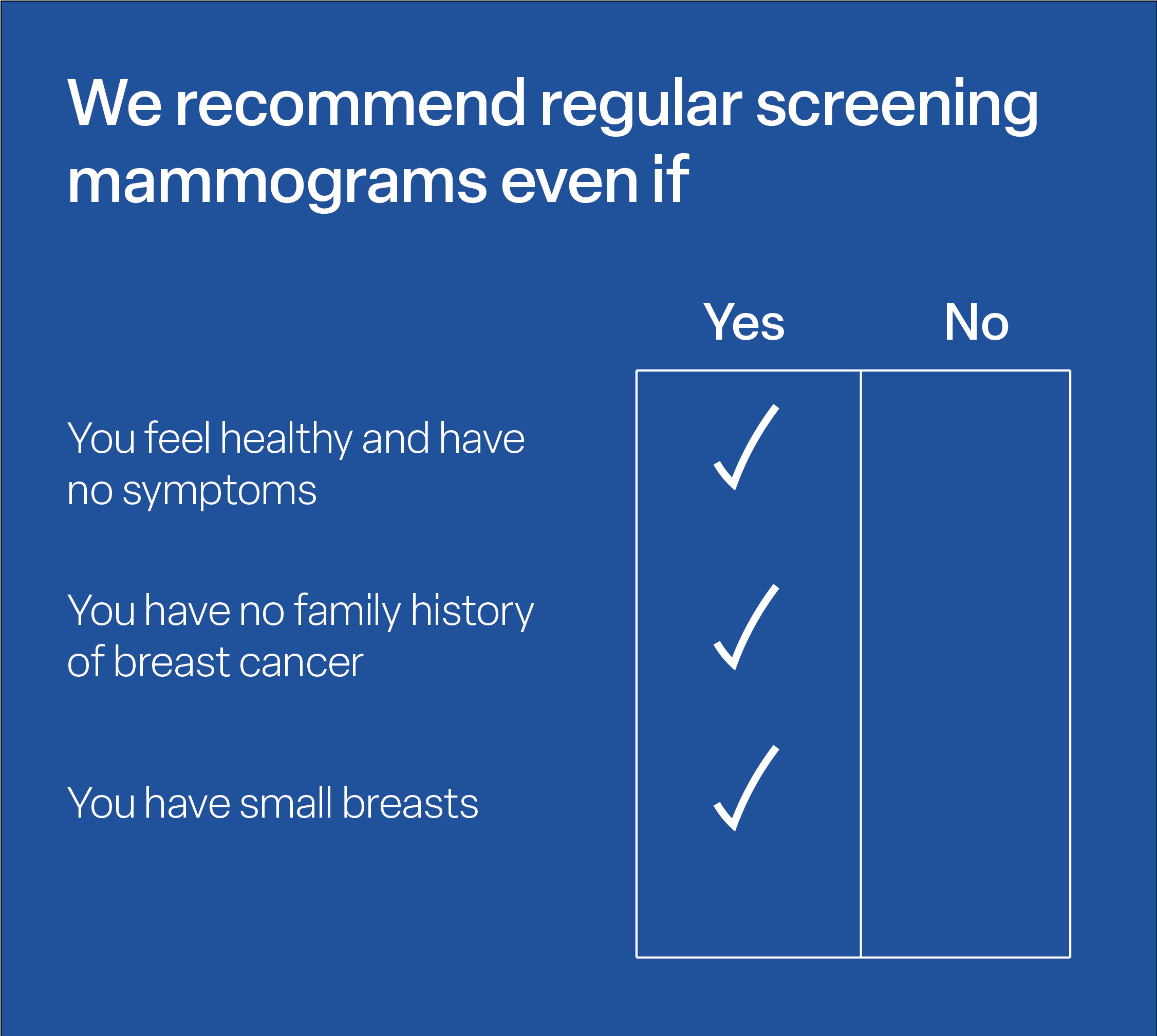Screening Guide
EFW Radiology is proud to be a part of the Alberta Breast Cancer Screening Program
Follow this guide to help you know what screening steps to take throughout your lifetime:
Learn more at screeningforlife.ca
• Know what looks and feels normal for you.
• Report any unusual changes in your breasts to your healthcare provider.
• See your healthcare provider regularly for a health checkup.
• Speak with your healthcare provider about your risk of breast cancer and the risks and benefits of screening mammograms.
• Ask your healthcare provider about having a breast exam during your regular health checkup.
• Check your breasts regularly for unusual changes.
• You may be eligible for a mammogram with the screening program. The first mammogram requires a requisition, then subsequent appointments you can self-refer with EFW Radiology. Talk with your healthcare provider to see if you’re eligible in the screening program.
• At the age of 45, you are eligible to self-refer with EFW Radiology.
• Have a screening mammogram every 2 years or as often as you and your healthcare provider have decided is best for you.
• Ask your healthcare provider about having a breast exam during your regular health checkup.
• Check your breasts regularly for unusual changes.
• Talk to your healthcare provider about the benefits of screening mammograms. You may still benefit from regular screening mammograms.
• Ask your healthcare provider about having a breast exam.
• Check your breasts regularly for unusual changes.
Understanding Breast Cancer
Learn more about EFW Radiology’s Breast Imaging Services
Breast cancer begins when abnormal cells grow in the breast. These cells may form lumps called tumours. Some tumours are cancerous (malignant) and some are not cancerous (benign). A benign tumour does not spread to other parts of the body and isn’t usually life threatening. A malignant tumour can spread to other parts of the body and can be life threatening.
Breast cancer is the most common cancer found in women. It’s the second leading cause of female cancer deaths. About 1 in 7 Alberta women will have breast cancer in their lifetime. Screening and better treatments have lowered breast cancer deaths in Alberta over the last few decades.
When cancer is found early, it’s usually very small and has not spread from where it started. Treatment for cancer that’s found early may work better than for cancer that has already spread.
Breast changes do not always mean you have breast cancer. If you notice these changes, see your healthcare provider right away:
• a lump in your breast or armpit
• nipple turned inward, if it isn’t usually
• crusting, bleeding or a rash on your nipple
• unusual fluid coming from your nipple
• dimpling or thickening of skin in one area of your breast
We Recommend

Resources
- Learn more about the Alberta Breast Cancer Screening Guidelines
- LGBTQ2S+ community members and Breast Cancer Screening
- Download our Mammography Patient Resource
